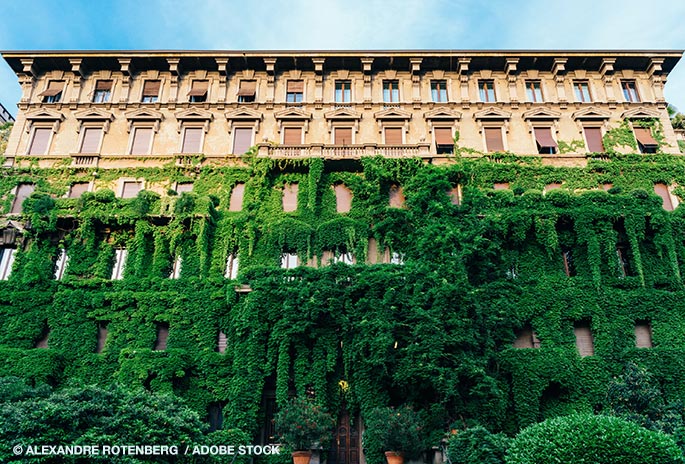
Vertical forests (the idea of growing plants on the exteriors of buildings to provide air filtration and additional oxygen in urban settings) are becoming more and more popular as the years go on. Many structures take the term literally, focusing on balconies and exterior ledges that hold trees and bushes, providing platforms that support plant growth. However, according to The Plaid Zebra, researchers in Barcelona, Spain have found a unique way to pair concrete with moss, lichens, and other plants that can create a unique facade while also helping fight climate change.
Biological Concrete?
Unlike traditional buildings, those made with this biological concrete come in layers. The base layer is meant to insulate the interior of the building from all outside forces, including wind, water, etc. The layer above that is permeable. It stores rainwater to nourish the organisms hosted above. The top layer is where the moss, lichens, etc. flourish, absorbing CO2 and providing the same purifying effect as several acres of trees would, but with no lost real estate on the ground.
In addition to being good for the environment, though, this biological moss-growing concrete is also suitable for the building. It can absorb and capture the heat of the day; the bio-layer insulates the building, making it less necessary to use artificial heating and cooling methods regardless of the weather. It also requires minimal changes to existing construction methods, allowing for these buildings to be built quickly, and without any special tools or training.
Not A Universal Solution
Something the creators have pointed out, though, is that this moss-growing concrete is not a universal solution. While the moss can make unique patterns, and provide a facade unlike what other buildings will have, the plants need a temperate, Mediterranean climate to live comfortably. While that describes a lot of places all around the world, it’s not a solution that will work well for cities that are either too far north or south for the moss to thrive.




































































































































 Three Ways to Engage Teams and Clients to Maximize Your Recycling Program Engagement
Three Ways to Engage Teams and Clients to Maximize Your Recycling Program Engagement  How to Integrate Accessibility Into Your Sustainability Planning
How to Integrate Accessibility Into Your Sustainability Planning  Why Park Benches Can Promote Workplace Well-Being
Why Park Benches Can Promote Workplace Well-Being 
